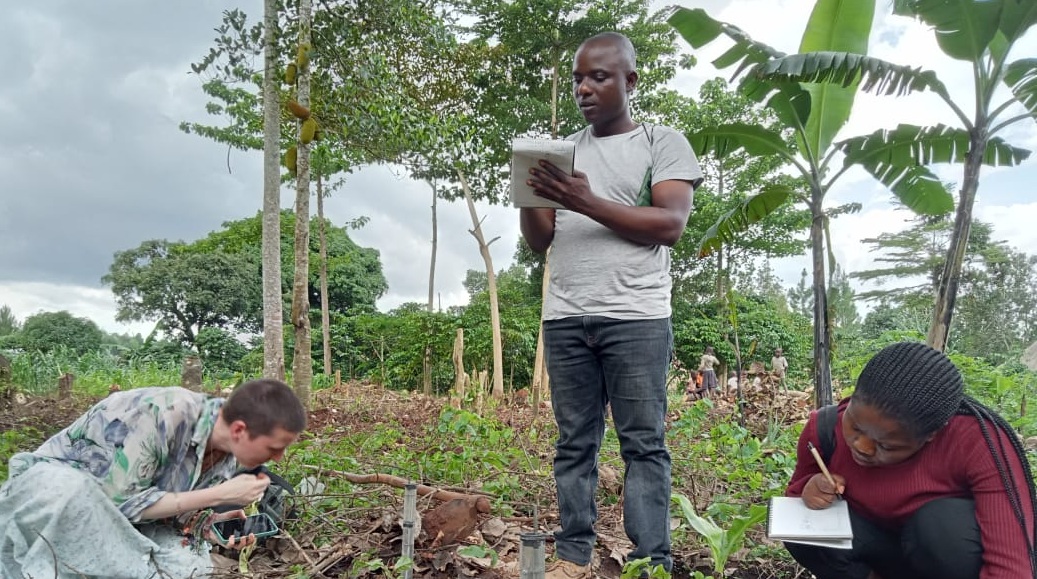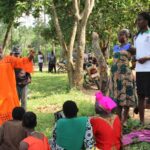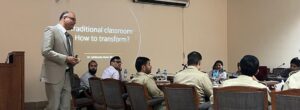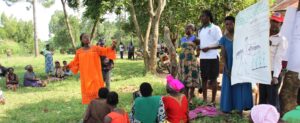
Guest post – rethinking open access policy in development research: reflections on the INASP policy paper
INASP is pleased to welcome a guest blog in response to our recent policy paper a review of open access policy options for development research funders from Ashley Farley, Senior Officer Knowledge and Research Services at the Gates Foundation. For expressions of interest in INASP guest blogs please contact [email protected].
The recently released INASP policy paper, Open Access Policy Options for Development Research Funders (August 2025), is an important and timely contribution to the open access conversation. It reviews the current state of open access policies across the development funder landscape and presents a useful framework for global development funders to consider issues of access, reuse, costs, impacts, equity, and resourcing, in the context of their own values and strategic objectives. These are the right components for funders to weigh as they navigate the complexities of knowledge dissemination in a rapidly changing environment.
This paper should encourage all funders to reevaluate their current open access policies — or create one if they do not have one. While this is a strong starting point, longer and deeper discussions are needed to explore how funders can best drive systemic change and tackle inequities in research publishing
Beyond APCs: Expanding the Conversation
The policy paper notes that by withdrawing support for Article Processing Charges (APCs), funders risk constraining access to publishing. But this framing assumes APCs are the only route to open access. That’s not true. Many authors — particularly underfunded or unfunded researchers — do not have sufficient resources to pay APCs and have achieved open access through other routes such as preprinting or self-archiving.
It is the publishers that set the affordability of APCs, and they must be held accountable for the growing unaffordability of open access.
Funder policy should not simply reinforce the APC system; it should broaden the conversation toward sustainable, equitable alternatives.
The paper also raises concerns that limiting APC coverage might negatively impact grantees by restricting their ability to publish in prestige journals. I would argue the opposite: this is precisely the kind of disruption needed.
The prestige economy in academic publishing perpetuates inequities and entrenches harmful incentives. While it may feel necessary for early career researchers to chase “top-tier” journals for career advancement, this cycle must eventually be broken. Funders, by signalling that impact and openness matter more than journal brands, can play a powerful role in shifting culture.
The paper notes throughout that it is possible to work within the current system and “balance societal benefits [of Open Access] with academic rights, including the freedom to publish where they choose.” It’s worth emphasizing that it is not only funder policies that restrict authors’ publishing choices — journal practices, licensing models, and opaque editorial processes are equally culpable.
The notion that authors have “freedom to publish where they choose” is misleading. Authors may be free to submit, but acceptance is never guaranteed, and affordability imposes further restrictions. Real freedom requires dismantling financial and structural barriers — not perpetuating them.
The Costs of Business as Usual
Further, the numbers are staggering: in 2023, funders in the sample could have spent up to US$81.8 million on APCs. Even after accounting for waivers, the estimate is still over US$74 million. For Official and Development Assistance (ODA) and multilateral funders alone, the figure is US$5.6 million.
Imagine the transformative change these resources could drive if spent differently. The 21 funders studied represent only a fraction of the larger ecosystem — libraries, institutions, and other funders are pouring millions more into the same flawed system. Greater coordination is urgently needed to ensure this money supports true dissemination rather than reinforcing entrenched business models.
The idea of setting APCs at different rates depending on location or institution type is also raised as a potential solution to inequity. But this puts too much responsibility on open access policy and ignores the deeper systemic inequities in global research. APC pricing remains largely static and Global North–centric. Efforts to encourage Purchasing Power Parity have been limited. Ultimately, publishers — not funders — hold much of the power to address inequities. Without real structural change from publishers, open access risks going backward, not forward.
The policy paper observes that APCs are generally lower for fully open access journals compared to hybrid journals. While true, not all fully open access publishers are created equal. Some mimic the profit-driven practices of large hybrid publishers.
At Gates, we addressed this challenge by partnering with a non-profit open access publisher PLOS, creating a tailored agreement that aligned with our policy objectives. Such partnerships give funders greater control over outcomes and ensure money is spent in line with mission and values.
Preprints: A Vital and Underappreciated Path
One area where I strongly diverge from the policy paper is its caution around preprints. The narrative that preprints might harm early career researchers or be disregarded in career assessment is both misleading and potentially damaging.
There is little evidence that preprinting undermines formal publication. On the contrary, many funders now allow or even encourage preprints in grant proposals and progress reports. Organizations like ASAPbio, PREreview, and RRID are actively working to normalize preprinting and peer review of preprints — especially for the early career research community. Preprints offer a critical opportunity to share results quickly, build visibility, and contribute to open peer review.
The truth is that preprints will never be fully recognized in promotion until they are widely practiced. Funders should lead in normalizing and rewarding them.
One solution the paper suggests is that funders might reimburse publication costs up to two years after a grant ends. While pragmatic, this normalizes an unacceptable delay. In development research especially, time is not neutral — delays in sharing results can cost lives and hinder critical progress.
Here again, preprints and self-archiving provide low-cost, immediate alternatives. Funders should not be comfortable with lengthy delays; they should incentivize rapid and open dissemination.
Rights Retention: A Necessary but Challenging Tool
The policy paper highlights rights retention as a strategy to guarantee immediate access when publishing in non-open access journals. I agree that rights retention is essential for protecting author control, but publisher resistance often makes this pathway fraught. Funders must not only encourage rights retention but also anticipate how to enforce it and support researchers in navigating resistance.
One forward-looking element of the paper is its recognition that Artificial Intelligence (AI) is reshaping the knowledge landscape. Funders are increasingly eager to see their research outputs included in large language models, believing that AI can accelerate problem-solving.
Traditional copyright does little to stop publishers from having their content scraped by AI models. Creative Commons licensing, on the other hand, ensures openness and strives for responsible reuse. Funders should recognize this and align licensing practices with their broader impact goals.
Conclusion: Toward Systemic Change
The INASP policy paper is an essential contribution, providing funders with a thoughtful framework for open access policy design. But policy tweaks alone are not enough. The broader system — dominated by prestige, inequities, publisher power, and sluggish dissemination — must be confronted directly.
Funders must work together, rethink how money is spent, and set incentives that truly align with the purpose of research: to advance knowledge and improve lives.
This paper opens the door. Now it’s up to all of us — funders, institutions, publishers, and researchers — to walk through it.
Photo credit Cephas Chisanga, Zambia, member of INASP’s Rising Scholars Network

 Previous Post
Previous Post Next Post
Next Post


